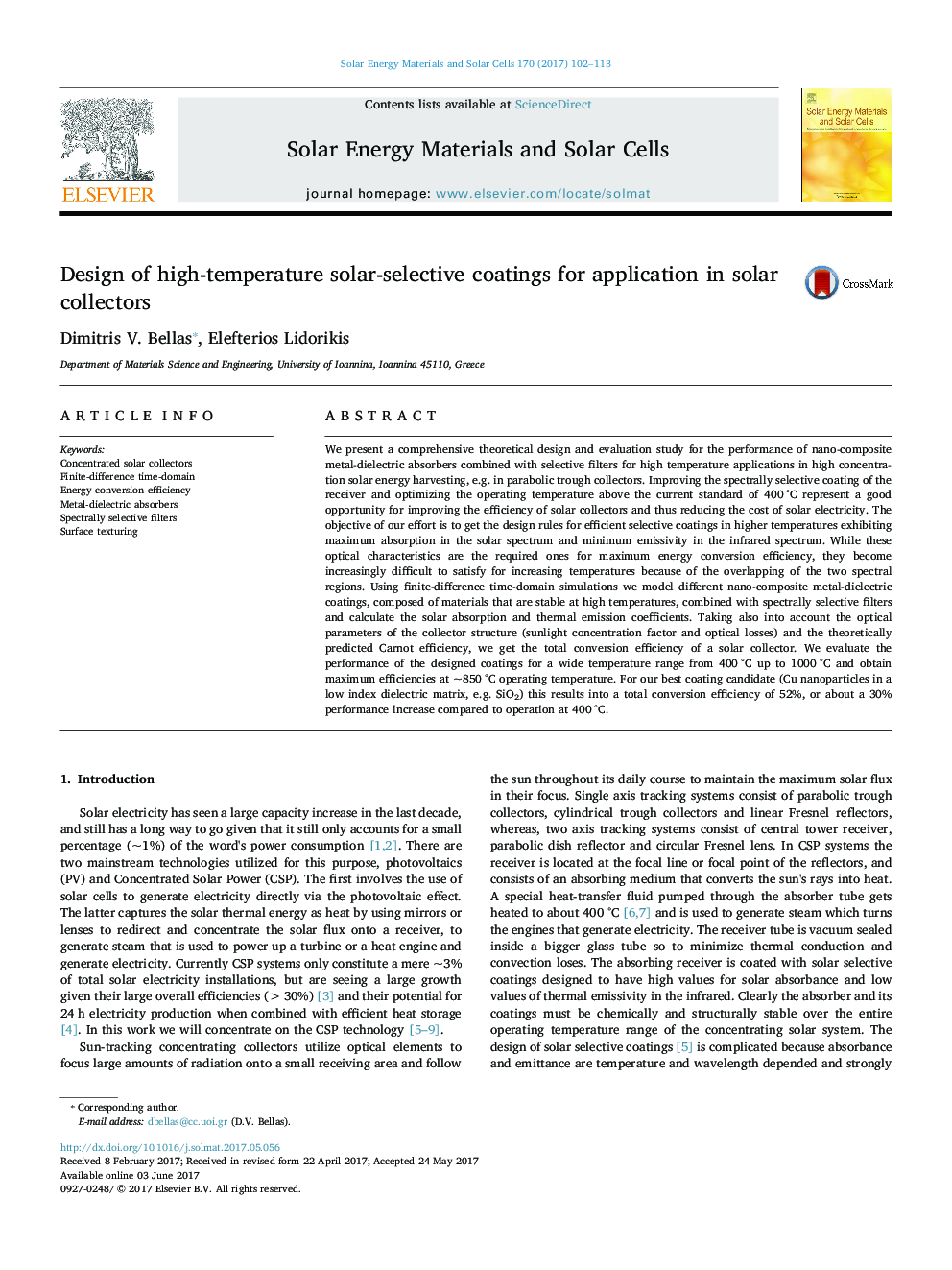| Article ID | Journal | Published Year | Pages | File Type |
|---|---|---|---|---|
| 6456815 | Solar Energy Materials and Solar Cells | 2017 | 12 Pages |
â¢Nano-composite absorbers and spectral filters for concentrated solar.â¢Theoretical evaluation of solar-to-work energy conversion efficiency.â¢Highest efficiency for low index nano-composites on a reflective Cu substrate.â¢TCOs as spectrally selective filters to increase energy conversion efficiency.
We present a comprehensive theoretical design and evaluation study for the performance of nano-composite metal-dielectric absorbers combined with selective filters for high temperature applications in high concentration solar energy harvesting, e.g. in parabolic trough collectors. Improving the spectrally selective coating of the receiver and optimizing the operating temperature above the current standard of 400 °C represent a good opportunity for improving the efficiency of solar collectors and thus reducing the cost of solar electricity. The objective of our effort is to get the design rules for efficient selective coatings in higher temperatures exhibiting maximum absorption in the solar spectrum and minimum emissivity in the infrared spectrum. While these optical characteristics are the required ones for maximum energy conversion efficiency, they become increasingly difficult to satisfy for increasing temperatures because of the overlapping of the two spectral regions. Using finite-difference time-domain simulations we model different nano-composite metal-dielectric coatings, composed of materials that are stable at high temperatures, combined with spectrally selective filters and calculate the solar absorption and thermal emission coefficients. Taking also into account the optical parameters of the collector structure (sunlight concentration factor and optical losses) and the theoretically predicted Carnot efficiency, we get the total conversion efficiency of a solar collector. We evaluate the performance of the designed coatings for a wide temperature range from 400 °C up to 1000 °C and obtain maximum efficiencies at ~850 °C operating temperature. For our best coating candidate (Cu nanoparticles in a low index dielectric matrix, e.g. SiO2) this results into a total conversion efficiency of 52%, or about a 30% performance increase compared to operation at 400 °C.
